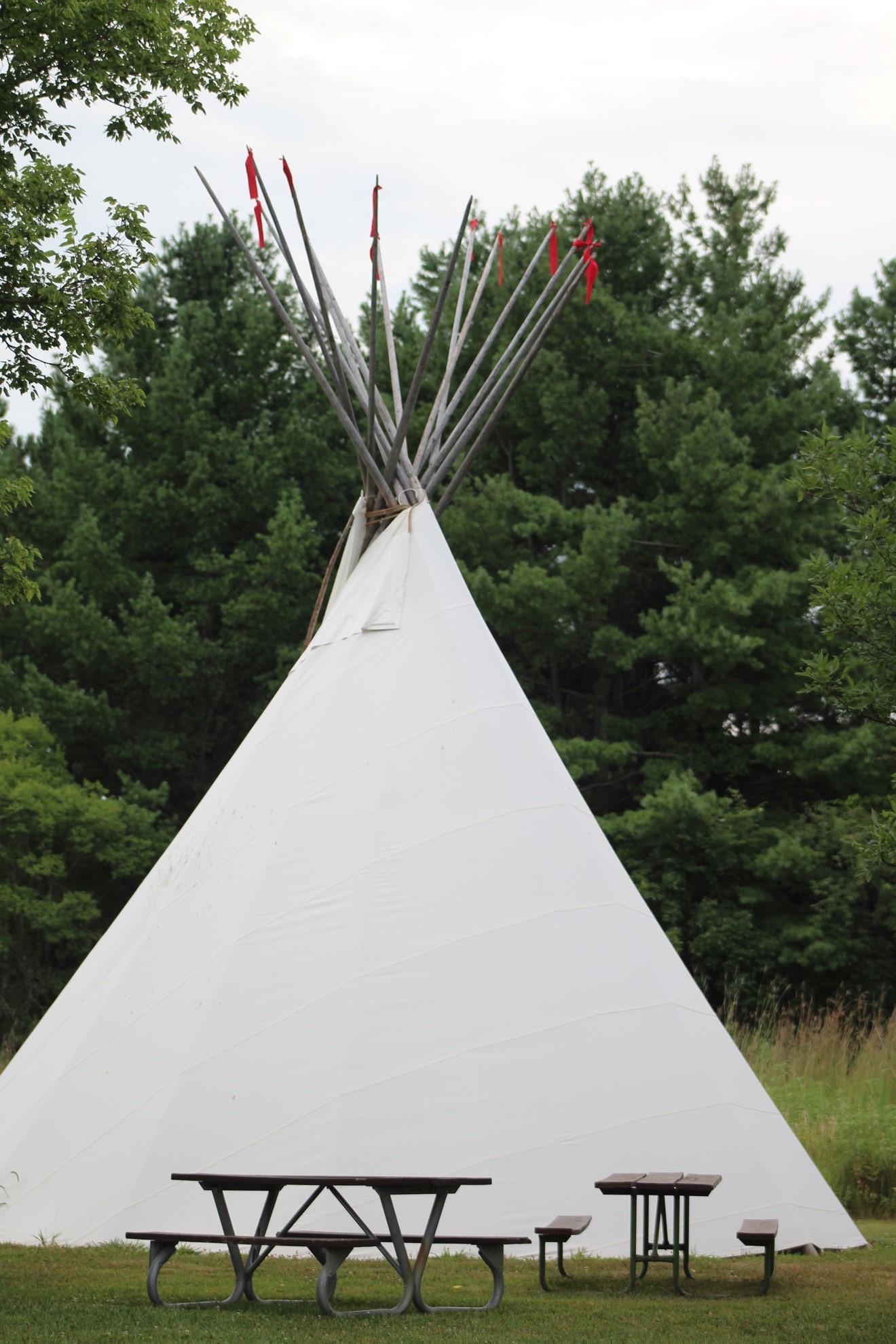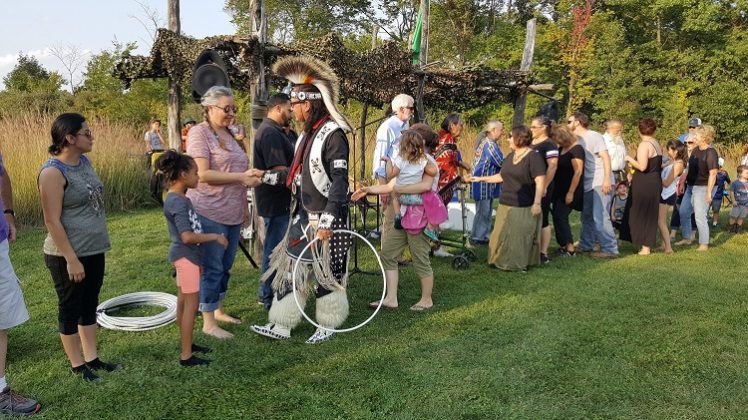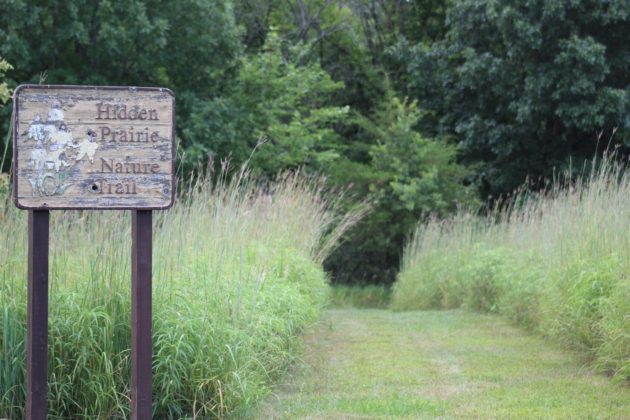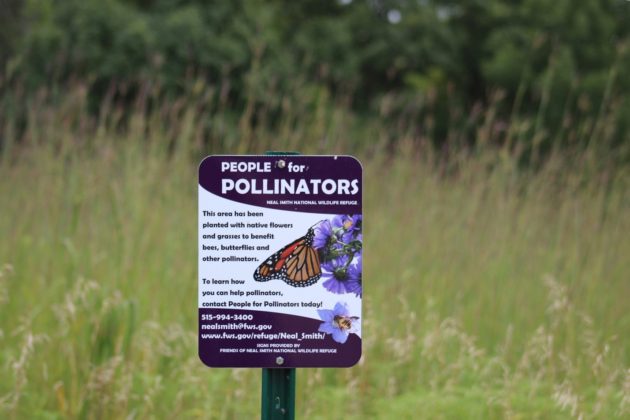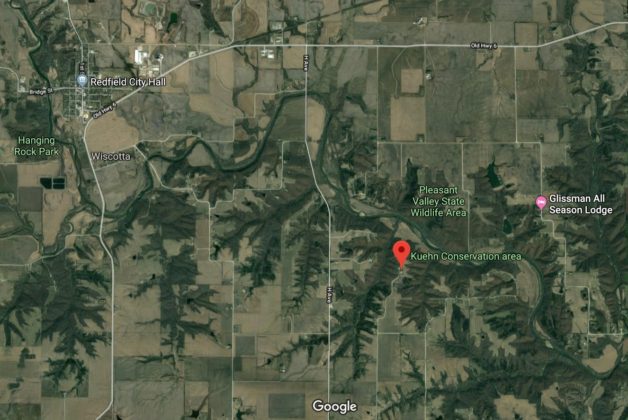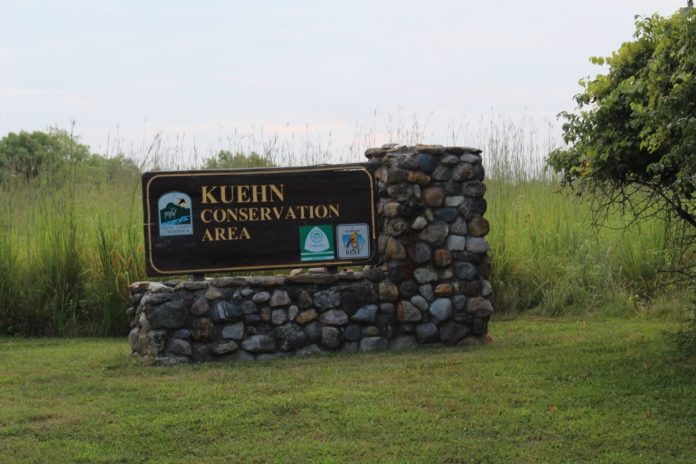
One of the gems in the Dallas County Conservation Board’s array of green spaces is the Kuehn Conservation Area — pronounced keen — located on 770 acres in southwest Dallas County about nine miles southeast of Redfield.
About 450 acres is designated as a wildlife refuge, with 190 acres open to public hunting and 130 for bow hunting only. Tucked on the edge of riparian woodlands on an unnamed tributary of the Middle-South Raccoon River, the land has both native and re-established prairie that provides habitat and food for many different species, including pollinators such as bees and butterflies.
Bordering the prairie are riparian and upland forest areas, with many walking paths located in the wildlife refuge. They are cut through the prairie and the forest and have many twists and turns just begging to be explored. The paths range from easy to challenging.
There are many spots along the paths where you can take in beautiful views including prairies, streams and a waterfall. One path will take you down to the Raccoon River, where you can possibly wade in the water, throw rocks or just enjoy the scenery.
The Kuehn Conservation Area is also home to several archaeological sites and Native American structures, including a tipi. There are educational programs offered, including bird-watching hikes and star gazing, plus geological, archaeological and aquatic programs.
A big item on the Kuehn calendar is the annual Prairie Awakening–Prairie Awoke Celebration, which is scheduled for Sunday, Sept. 9 from 4-8 p.m. near the Bear Creek Nature Center. The 2018 theme is Elders and Trees.
The Prairie Awakening–Prairie Awoke Celebration calls forth the spirits of the original occupants of the land prior to the arrival of European settler-colonists. Not only were Native Americans and the wildlife they subsisted on largely driven from the land by farmer settlers, but the tall grass prairies and oak savannas were also virtually disappeared, leaving Iowa the most ecologically altered state in the U.S.
The Kuehn Conservation Area is open one-half hour before sunrise until 10 p.m. daily. The Bear Creek Education Center is open by appointment only and features displays of the wildlife found in the area.
There are several picnic tables near the parking lot and prairie areas. There is also a grill or two available.
Camping is available via a walking service road. You must park near the Bear Creek Nature Center and carry in your supplies to the campsites, which lie between one-quarter and three-quarters of a mile from the restrooms and nature center.
There are five to seven sites available for $8 per night. Use the yellow tube near the nature center to pay the fees.
For more information on hunting boundaries, classes, hikes and other activities, contact the Dallas County Conservation Board at 515-465-3577 or visit the Dallas County Conservation website.
Visit the parks and conservation areas in Dallas County. You never know what adventure awaits you.
Directions to the Kuehn Conservation Area at 32828 Houston Trail near Earlham, Iowa 50072:
From U.S. Interstate 80, take the Earlham exit (Exit 104) and proceed north to I Avenue. Stay northbound for just over one mile to a four-way stop intersection. Turn west (left) onto Bear Creed Road. Follow Bear Creek Road for one-half mile. The road will turn north, and become Houston Trail. Houston Trail dead-ends at the park.
Coming from County Road F60, between Adel and Redfield, turn south on H Avenue, about 5.5 miles west of Adel or two miles east of Redfield. Proceed on H Avenue for about four miles to the junction with Bear Creek Road. Turn east (left) onto Bear Creek Road and proceed one-half mile to the junction with Houston Trail. This is a T intersection. Turn north (left) at the T, and go about three-quarters of a mile to the park.
